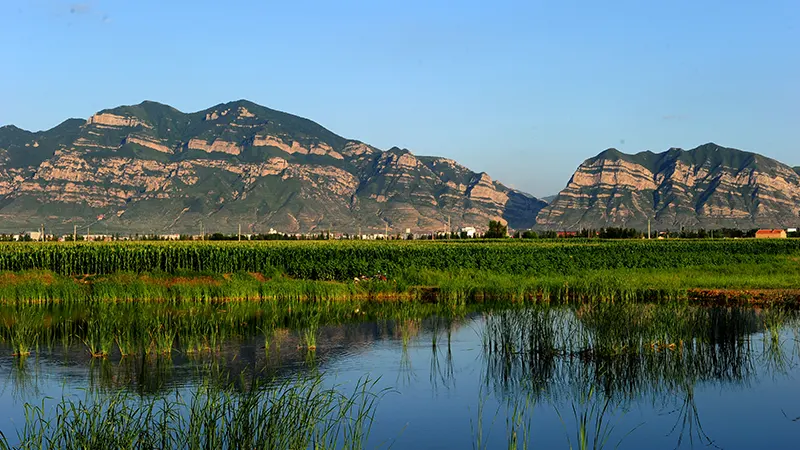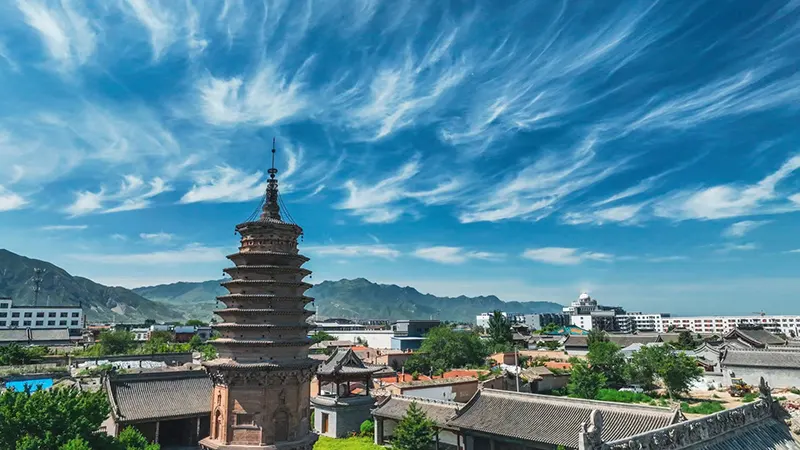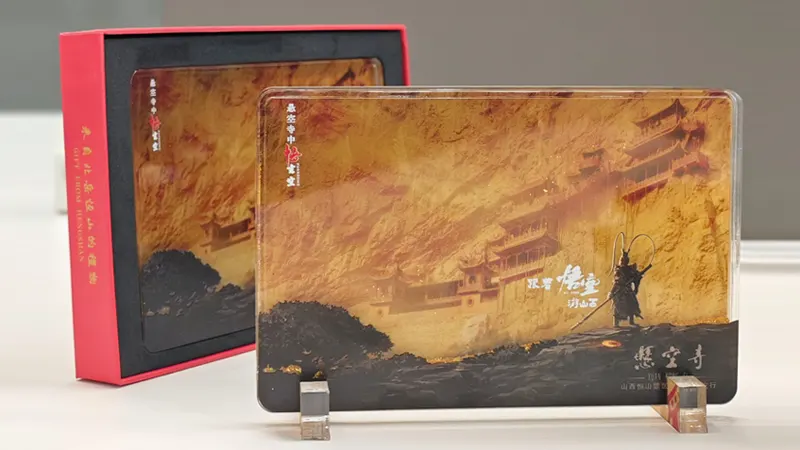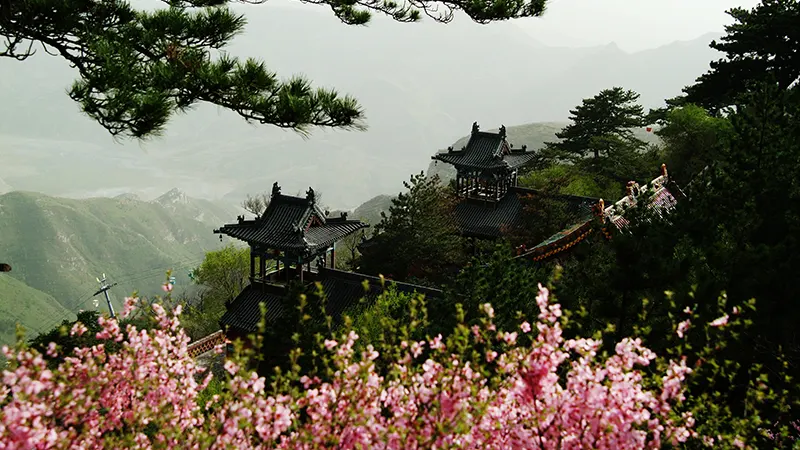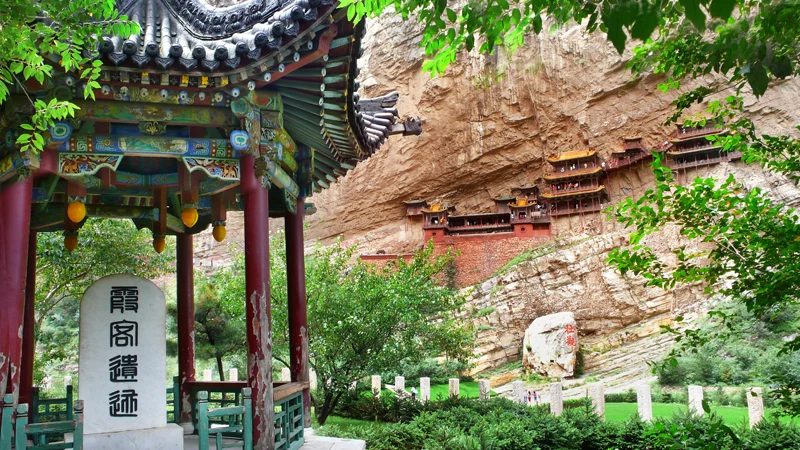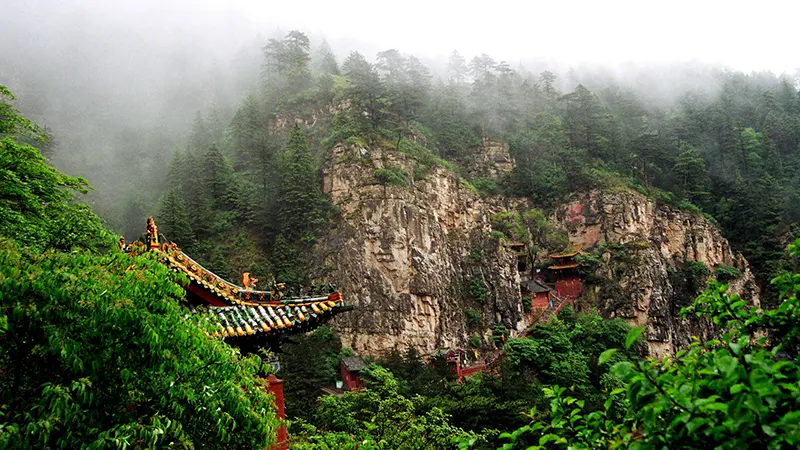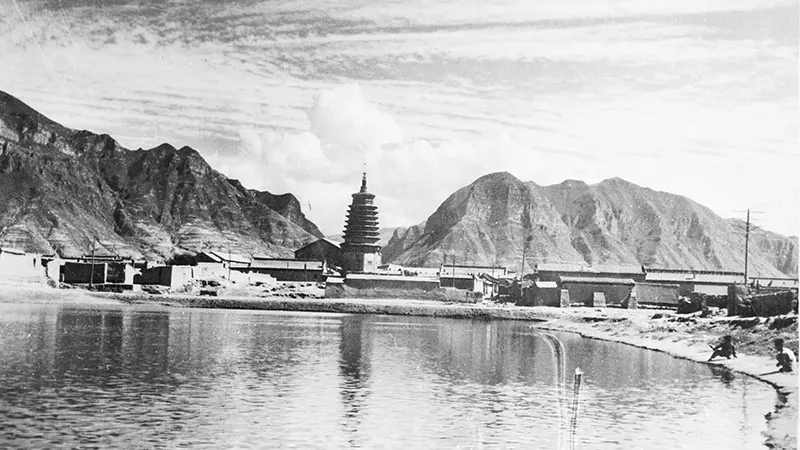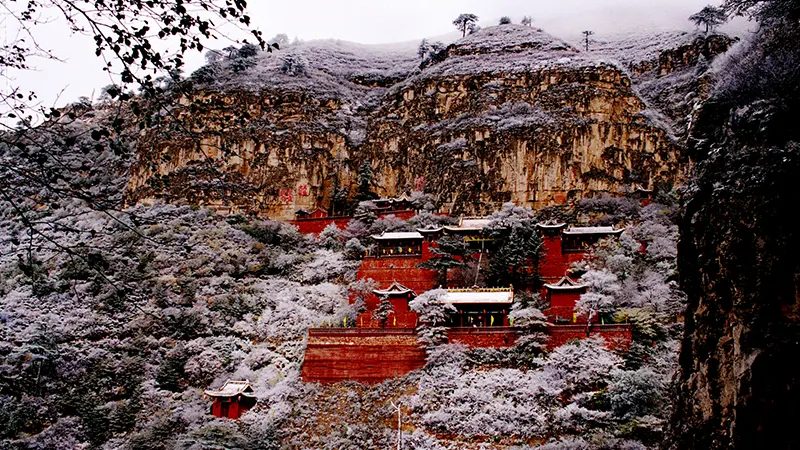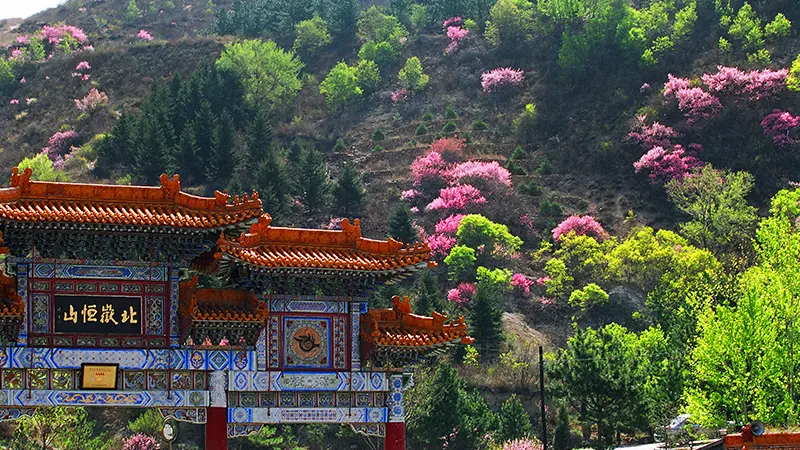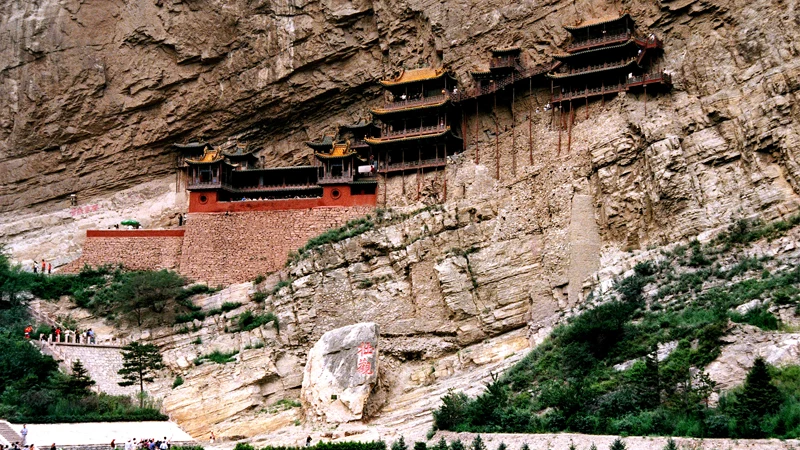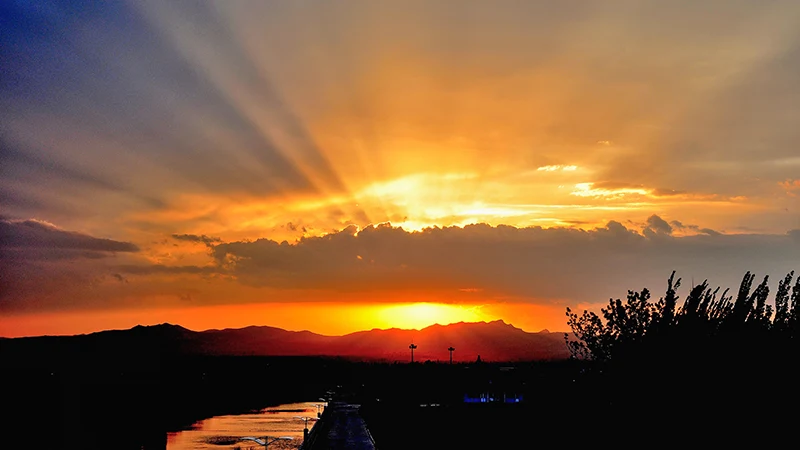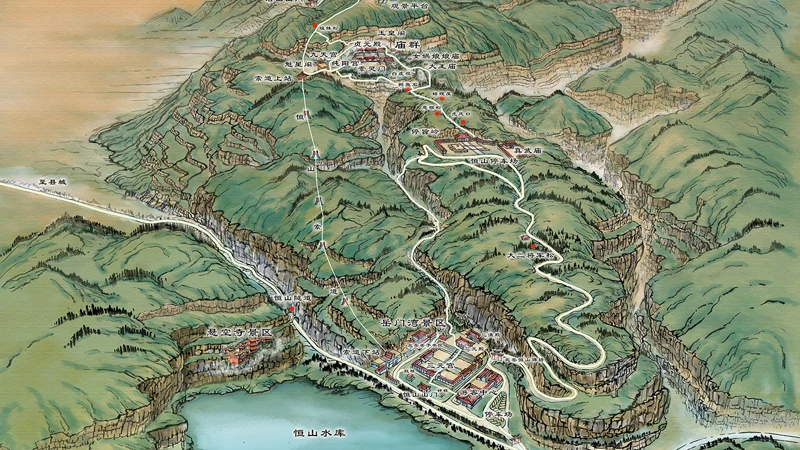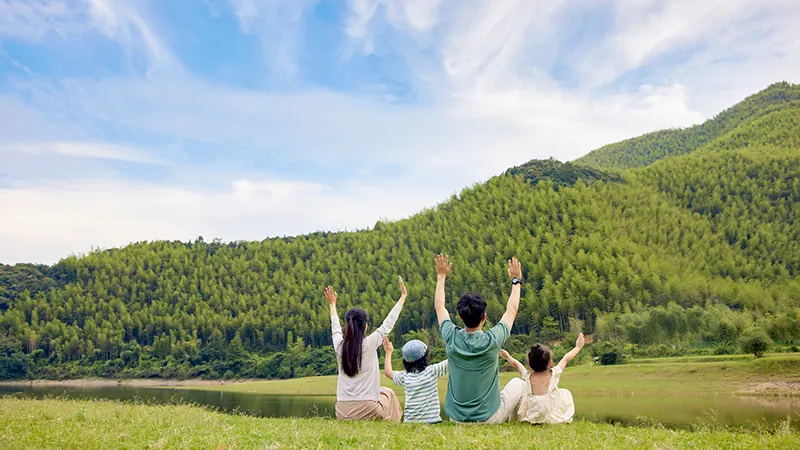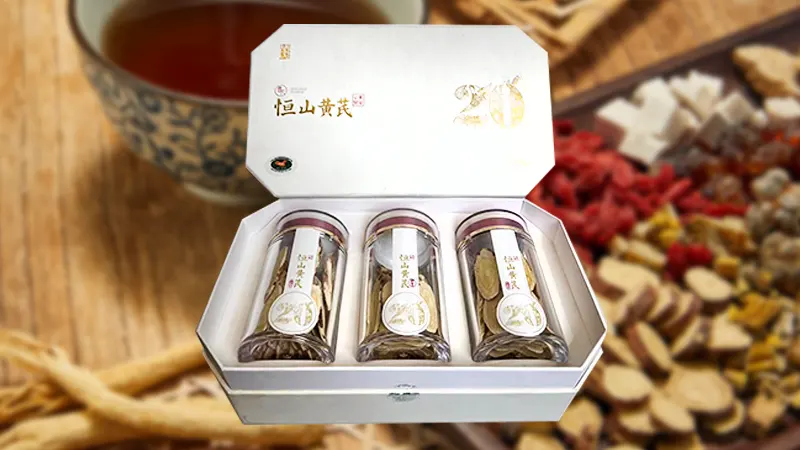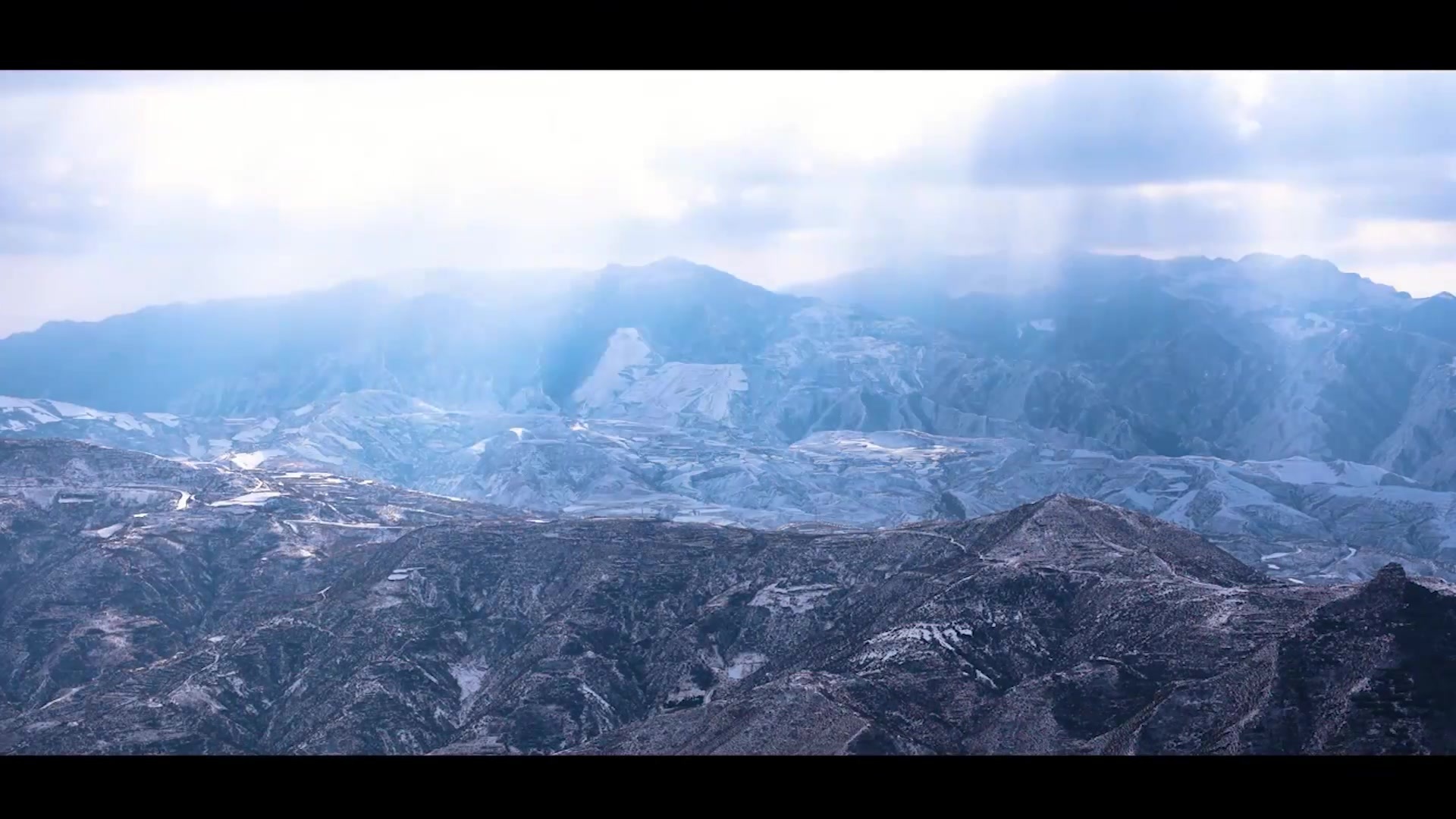Republic of China, Jiang Weiqiao | 1918 Hengshan Mountain photo album
Publish Time:
2025-03-18 12:50
Source:
In September 1918, Jiang Weiqiao, a councillor of the Ministry of Education of the Beiyang Government, was ordered by the Ministry of Education to inspect the academic affairs in Shanxi Province. He took the opportunity to pay his respects at Mount Wutai and Hengshan Mountain. He departed from Beijing on September 21, first taking a train to Shijiazhuang, and then to Taiyuan; then he took a carriage to Mount Wutai and Hengshan Mountain; and finally returned to Beijing from Datong by train on October 13.
Editor's Note
In September 1918, Jiang Weiqiao, a council member of the Ministry of Education of the Beiyang Government, was ordered by the Ministry of Education to inspect the educational affairs in Shanxi Province. He took the opportunity to visit Mount Wutai and Hengshan Mountain. He departed from Beijing on September 21st, first taking a train to Shijiazhuang, then to Taiyuan; then he took a carriage to Mount Wutai and Hengshan Mountain; and finally returned to Beijing from Datong by train on October 13th. During this period, on October 10th, arranged by Guo Junjiren (Shouqian), the magistrate of Hunyuan County, Jiang Weiqiao, accompanied by Han Xiangwu (Shangqing), director of the county's education promotion office, and Yuan Yingqi (Zhulin), the county's school inspector, took a sedan chair to Hengshan Mountain. Magistrate Guo instructed the cook to bring food, and they spent a day sightseeing and took more than 20 photos, aiming to record the scenery of Hengshan Mountain with images.
At that time, the Commercial Press in Shanghai was preparing to publish a photographic album titled "China's Famous Scenery," using chromolithography for fine printing. The photos were taken by prominent figures in Chinese education during their travels, collecting 24 famous mountains and scenic spots across the country. Jiang Weiqiao's "Hengshan Mountain" was listed as the 12th in "China's Famous Scenery" and was first published in July 1919. The album was priced at one yuan, measuring 27cm long and 19cm wide. The flyleaf included a preface to "Hengshan Mountain" and "Travel Notes." A total of 24 pictures were taken, basically covering all the scenic spots, major temples, and Taoist temples of Hengshan Mountain. All the text descriptions in the album were in both Chinese and English, indicating that the target audience was not only domestic readers; the concept of promoting China's famous scenery to the world already existed at that time.
Modern figures' travels to Hunyuan and Hengshan Mountain have always been a focus of this publication. We are now publishing the full text of this album for our readers.

Hengshan Mountain Album
Jiang Weiqiao | Text
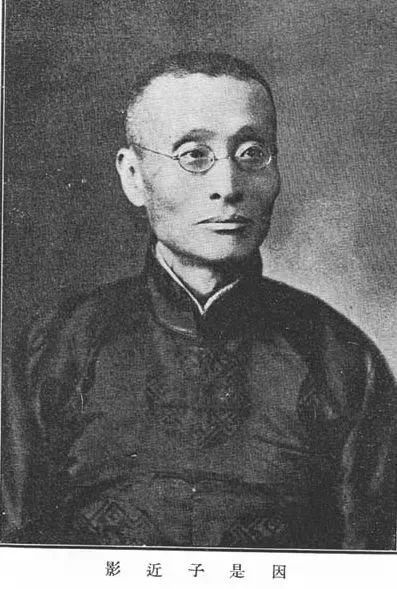
Jiang Weiqiao (1872—1958)
Jiang Weiqiao (1872—1958), courtesy name Zhuzhuang, pseudonym Yinshizi, was a native of Wujin, Jiangsu Province. He was a scholar, a renowned modern educator, philosopher, Buddhist scholar, and health preservation expert. In 1902, he met Cai Yuanpei and together they engaged in the patriotic education movement of the Chinese Educational Society. He served as an inspector of the Chinese Educational Society, an instructor at the Patriotic Academy, and held positions such as administrator, instructor, and principal at patriotic women's schools, and editor of primary school textbooks at the Commercial Press. During his time at the Commercial Press, starting in 1905, he initiated and presided over primary school teacher training institutes, Shanggong Primary School, commercial supplementary schools, and workers' night schools.
After the establishment of the Republic of China, Cai Yuanpei successively served as Minister of Education in Nanjing and Beijing. Jiang Weiqiao was also invited to serve as Secretary-General and Council Member of the Ministry of Education. Although he left his post at times, he never interrupted his activities in education. In July 1922, Jiang Weiqiao became the director of the Jiangsu Provincial Department of Education. In 1925, he became the president of Southeast University, and left his post in 1927 to reside in Luzhou. From September 1929, he was appointed to Guang Hua University in Shanghai, serving successively as professor of philosophy, professor and head of the Chinese Department, and dean of the College of Arts for 20 years. In August 1938, he concurrently served as the president of Zhengfeng College of Arts in Shanghai; from July 1941, he concurrently served as vice-president, president, and honorary president of Hongying Bookstore in Shanghai; in September 1946, he concurrently served as president of the Shanghai Humanities Monthly Society. After the founding of the People's Republic of China, he attended the Suzhou People's Congress as an invited representative and was elected chairman of the presidium. He passed away in Shanghai on March 16, 1958.
Jiang Weiqiao's Writings His works include the "Yinshizi Meditation Method" series, "School Administration Law," "Lecture Notes on Psychology," "A History of Chinese Philosophy in the Last Three Centuries," "Essentials of Lüshi Chunqiu," "A History of Chinese Buddhism," "Introduction to Buddhism," "A Brief Survey of Buddhism," "Outline of Buddhism," "Commentary on the Mahayana Guangwuyun Lun," "Recollections of the Chinese Educational Society," and co-authored with Yang Daying, "Outline of the History of Chinese Philosophy" and "Outline of Song and Ming Neo-Confucianism." Among them, "A History of Chinese Buddhism" has had the greatest influence and is a pioneering work in the study of modern Chinese Buddhist history.
Preface to Hengshan Mountain
Hengshan Mountain is located 20 li south of Hunyuan County in Shanxi Province. In ancient times, the emperor would make a northern hunting expedition to the Northern Mountain, that is, Hengshan Mountain, in the twelfth month. The mountain is located in the remote north. In the past, travelers had to travel north from Taiyuan by land, passing through Pingxing Pass or Yamen Pass. The journey was arduous, taking ten days to reach. Now, thanks to the Beijing-Suiyuan Railway, it only takes three days to travel from Beijing. Northern mountains are generally majestic but lack delicate beauty. However, Hengshan Mountain is uniquely beautiful and verdant, worthy of its title as a sacred mountain. This year, while inspecting education in Shanxi, I visited Taiyuan, Xinxian, Dingxiang, Wutai, Hunyuan, and Datong counties. After visiting Mount Wutai, I also visited Hengshan Mountain. It was October in the Gregorian calendar, and the mountain was already covered with snow, showing the difference in climate between the inside and outside of the passes. I took more than 20 photos on the mountain, compiled them briefly, and had them printed using chromolithography. I added descriptions and information about mileage, food, and accommodation. Those who share the same interest can view them.
Written by Jiang Weiqiao in December of the seventh year of the Republic of China

Preface and Travel Notes of Hengshan Mountain
Travel Notes
From Xizhimen in Beijing, take the Beijing-Suiyuan bus, departing in the morning and arriving in Datong in the evening. The third-class fare is 5.6 yuan; second-class is double the price; and first-class is triple the price. The distance from Xizhimen to Datong Station is 672 li.
Near Datong Station, there are modern hotels, such as Donghua and Tai'an, which are quite clean, and the food is also delicious. First-class rooms cost one yuan per day for meals and accommodation, second-class costs 50 cents. The hotels can arrange car and horse rentals for guests.
Datong is 120 li from Hunyuan County. You can either take a mule cart or a carriage (using reed mats as a carriage, similar to a sedan chair in the interior, carried by two mules, which avoids bumps on mountain roads). The mule cart costs about two yuan per day, and the carriage costs about four yuan per day.
Departing from Datong, travel 60 li to Jijiangzhuang in one day, where there is a Changsheng Inn. This is the border between Datong and Hunyuan. Another 10 li into Hunyuan territory, you reach Wengchengkou, where there is a Daxing Inn, which is relatively clean and suitable for lodging. Room and board cost about 300 wen per person per day. The people in the northern counties of Shanxi Province mainly eat steamed wheat and potatoes. We are not used to it, so it is best to bring your own white rice and canned food. When you arrive at the inn, ask them to cook porridge. Departing from Jijiangzhuang or Wengchengkou, travel 60 or 50 li to Hunyuan County in one day. There are inns outside the south gate of the county town, but they are not very clean. Daily meals and accommodation cost only a few hundred wen.
Hengshan Mountain has only one main peak, and a tour around it can be completed in a day. From the foot of the mountain to halfway up, the path is dirt and very flat. From halfway up to the Yue Temple, the stone path is slightly steeper, but the steps are even, making it easy to walk. If you want to climb to the top from behind the temple, you will encounter steep cliffs, dense vegetation, and blocked paths; only the brave can reach it.
The climate in North China is cold; snow falls in August on the lunar calendar and doesn't melt until March or April of the following year. Therefore, summer is the best time to visit Hengshan Mountain.
In the Yue Temple of Hengshan Mountain, there is only one Taoist priest; the scene is desolate. However, the temple buildings are periodically renovated with local public funds, so they are still magnificent. There are several rooms next to the temple where visitors can stay, but they must bring their own bedding and food.

Travel Notes
China's Famous Scenery, Twelfth installment
Hengshan Mountain Table of Contents
1. Hanging Temple
2. Hengshan Mountain Main Gate
3. Panoramic View of Hengshan Mountain
4. Villages below the Boat-shaped Ridge
5. Snow on the Caimu Ridge
6. Tiger Wind Pass
7. Main Gate of Yue Temple
8. Sleeping Palace of the Mountain God
9. Changing Room
10. Two Springs of the Hidden Dragon
11. Main Hall of Yue Temple
12. Imperial Stele Pavilion
13. Jade Emperor Pavilion
14. Meeting the Immortals' Palace
15. Summit of Hengshan Mountain
16. Looking down at the White Dragon Cave from the summit
17. White Tiger Peak
18. Forest in front of White Tiger Peak
19. Distant View from the Qinqi Terrace
20. Pure Yang Palace
21. Lingyun Pavilion
22. Madam's Temple
23. Guan Di Temple
24. Side and front views of the Yue Temple Seal

China's Famous Scenery, Twelfth installment Hengshan Mountain Table of Contents
(1) Hanging Temple
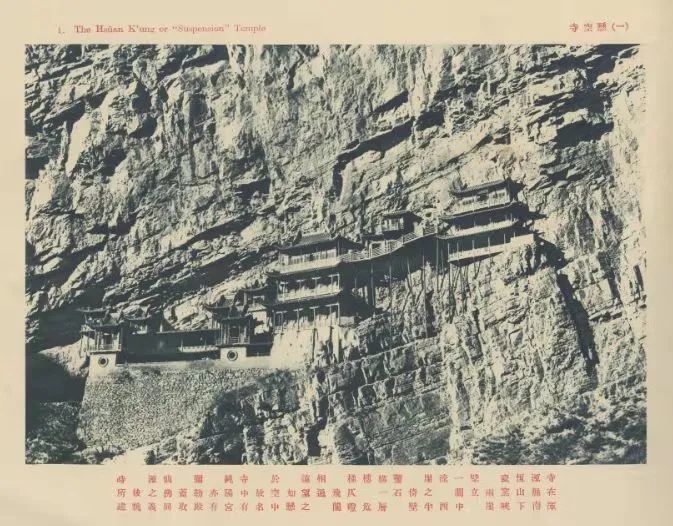
The temple is located in Ciyao Gorge at the foot of Hengshan Mountain, south of Hunyuan County. Two cliffs stand tall, with a stream flowing between them. Halfway up the west cliff, a building is carved into the rock face, forming a layered structure. Dangerous stairs and narrow paths connect the pavilions; from afar, it appears to be suspended in the air, hence the name. The temple contains the Pure Yang Palace and a Maitreya Hall, embodying the idea that immortals and Buddhas share a common origin. It was built during the Northern Wei Dynasty.
(2) Hengshan Mountain Main Gate

Passing the Hanging Temple and walking through the gorge for about a li, three gates appear on the east side of the stream, with the inscription "Hengshan Mountain" above them; these are the mountain gates of the Hengshan Mountain Yue Temple.
(3) Panoramic View of Hengshan Mountain

Hengshan Mountain is similar to Mount Tai, with only one peak, but it is uniquely beautiful and verdant. From the east gate, the path is flat for about a li, then turns north, offering a panoramic view of the mountain. Temples on the mountain top are built in harmony with the terrain, scattered and elegant.
(4) Villages below the Boat-shaped Ridge

Below the Boat-shaped Ridge halfway up the mountain, there are dozens of houses, with walls made of earth and roofs made of thatch, exuding an ancient charm.
(5) Snow on the Caimu Ridge

Looking southwest from the middle of the mountain, the ridges overlap, with the largest being the Caimu Ridge. The snow on the top of the ridge is very thick, and when the sun shines on it, it is truly a pleasant sight. This was on October 1st of the Gregorian calendar, also the beginning of the ninth month of the lunar calendar.
(6) Tiger Wind Pass
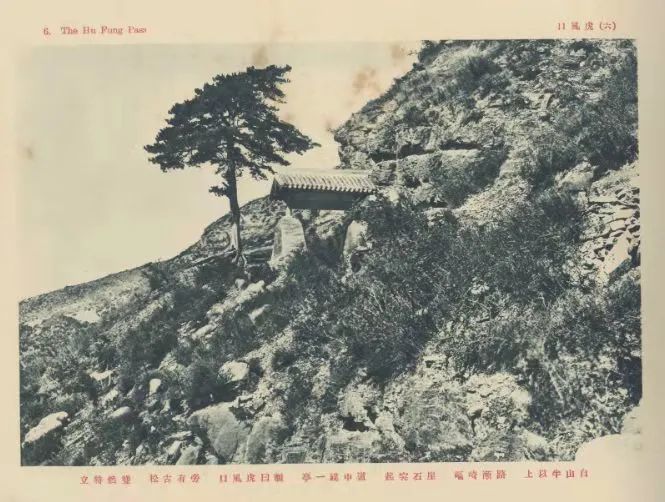
From halfway up the mountain, the path becomes increasingly rugged, with protruding cliffs. A pavilion is built along the path, named Tiger Wind Pass. There is an ancient pine tree standing beside it, towering and striking.
(7) Main Gate of Yue Temple
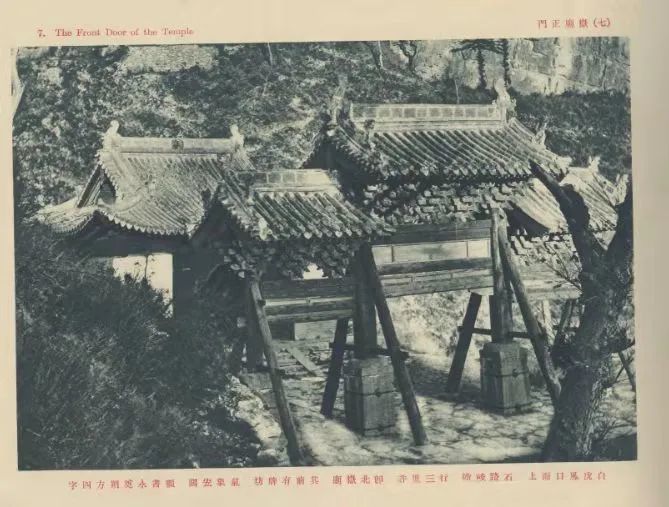
From Tiger Wind Pass upward, the stone path is steep. After traveling for about three li, you reach the North Yue Temple. There is a grand archway in front, with the inscription "Forever Establishing the North."
(8) Sleeping Palace of the Mountain God

Going up the steps east from the archway, halfway up the cliff is the Sleeping Palace of the Mountain God, covered by rocks on three sides, with great beauty.
(9) Changing Room

The Yue Temple ascends along the slope of the mountain. After entering the temple, to the left is this hall which is still intact.
(10) Two Springs of the Hidden Dragon
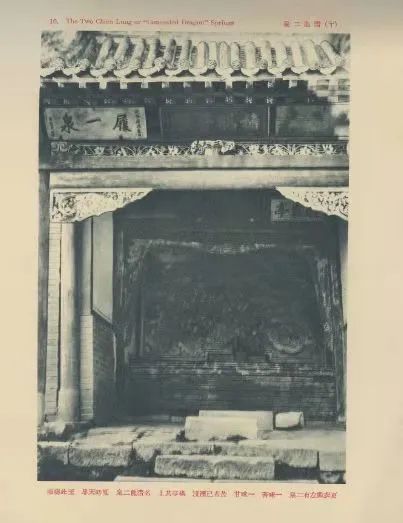
To the left of the hall are two springs; one is bitter, the other sweet. The bitter one is now gone, but a pavilion is built above, named Two Springs of the Hidden Dragon. In the early summer, people come here to pray for rain.
(11) Main Hall of Yue Temple
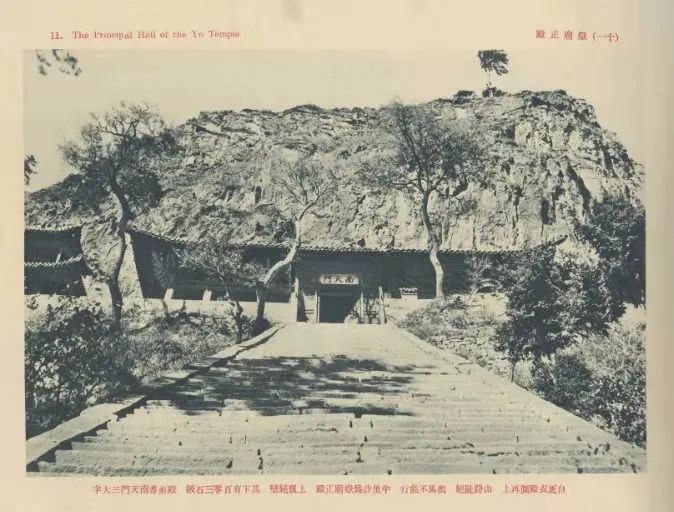
From the side of the Changing Room, the mountain road becomes steep, impassable for carriages and horses; half a li is the main hall of the Yue Temple. It is backed by a sheer cliff, and there are 103 stone steps in front, with the inscription "Southern Heavenly Gate" on the front hall.
(12) Imperial Stele Pavilion
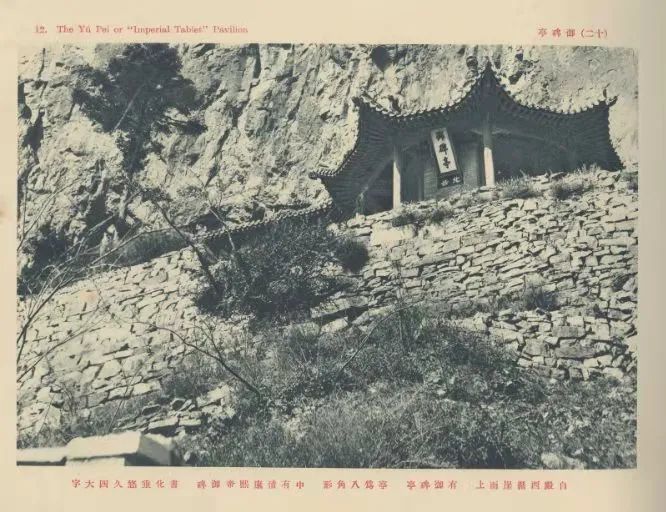
Going west from the hall along the cliff, there is an Imperial Stele Pavilion, octagonal in shape; inside is an imperial stele from the Qing Emperor Kangxi, inscribed with "Transforming and Enduring for Ages."
(13) Jade Emperor Pavilion
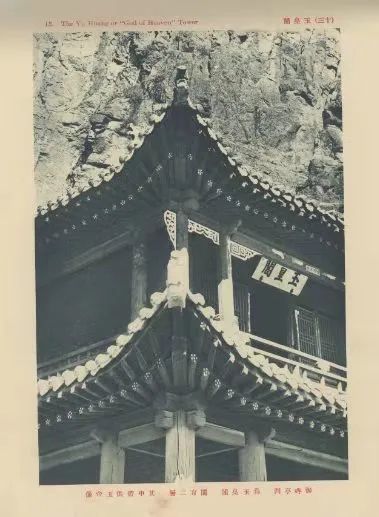
West of the Imperial Stele Pavilion is the Jade Emperor Pavilion, which has two stories, both of which contain statues of the Jade Emperor.
(14) Meeting the Immortals' Palace

West of the Jade Emperor Pavilion is a hall located under a stone cave; inside, there are statues of various immortals; on the cliff behind the hall is the inscription "Meeting the Immortals' Palace."
(15) Summit of Hengshan Mountain

East of the Yue Temple is a path that leads to the summit. The ascent is steep and without steps, with dense, low-lying trees and thorny undergrowth; one must exert oneself to climb to the top. The city of Hunyuan lies in the shadow of the mountain; viewed from the summit, it looks like a small circle drawn on the ground. From the foot to the peak, measurements taken with an altimeter show the summit to be 2,080 feet above sea level, or 6,500 construction feet.
The three people pictured at the summit taking a group photo are believed to be the author, Jiang Weiqiao; Han Xiangwu, then the director of the Hunyuan School Encouragement Office; and Yuan Yingqi, the county school inspector. Mr. Jiang wrote in his travelogue: When visiting Hengshan Mountain, "The director of the School Encouragement Office, Mr. Han, and the school inspector, Mr. Yuan, also stayed there." 。
(16) View of the White Dragon Cave from the Summit
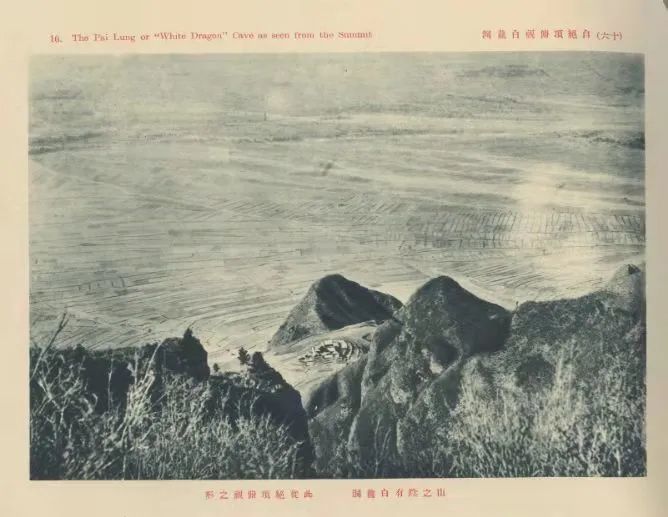
The White Dragon Cave is located in the shadow of the mountain; this is its appearance as seen from the summit.
(17) White Tiger Peak
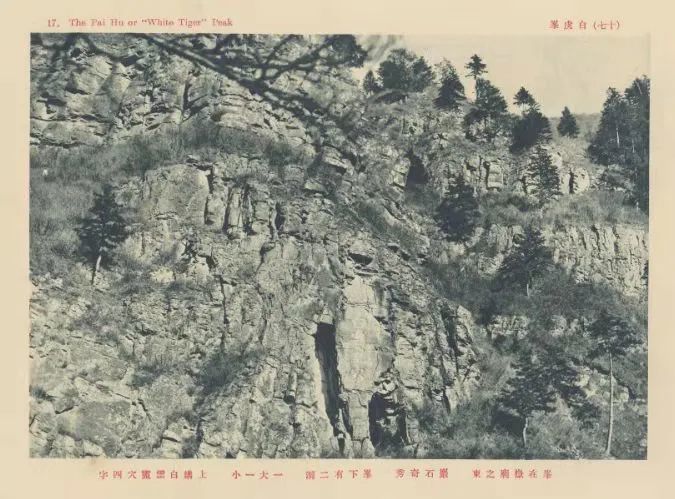
The peak is located east of the Yue Temple, with uniquely beautiful rocks. There are two caves at the foot of the peak, one large and one small, with the inscription "White Cloud Spiritual Cave" above.
(18) Forest in Front of White Tiger Peak

The White Tiger Peak is densely covered with pines and cypresses. Viewed from the summit, they appear green and lush; upon closer inspection in the forest, they are all large enough to embrace, reaching for the sky, and complementing the strange rocks.
(19) Distant View from the Qinqi Terrace

The terrace is located west of the Hui Xian Mansion, with towering cliffs and a prominent peak. There is a stone table nearby; this is the view from below.
(20) Pure Yang Palace

The palace is located west of the Hui Xian Mansion, housing a statue of Lü Dongbin.
(21) Lingyun Pavilion
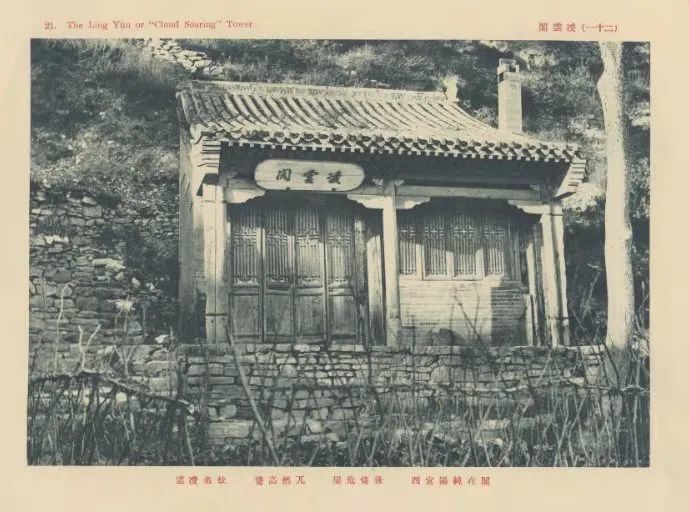
The pavilion is located west of the Pure Yang Palace, backed by a dangerous cliff, standing tall and abruptly; hence the name Lingyun (soaring clouds).
(22) Niangniang Temple
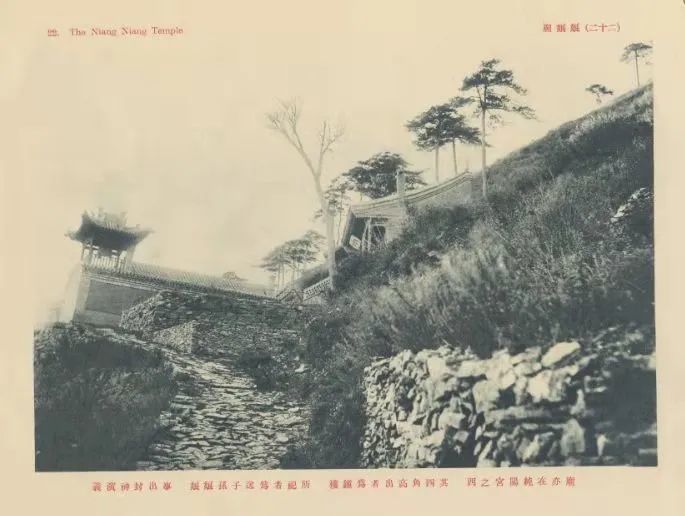
The temple is also located west of the Pure Yang Palace. Its elevated corners form a bell tower. The deity worshipped is the "Send-Son-and-Grandson" Niangniang (Goddess), a figure from the Fengshen Yanyi (Investiture of the Gods).
(23) Guan Di Temple
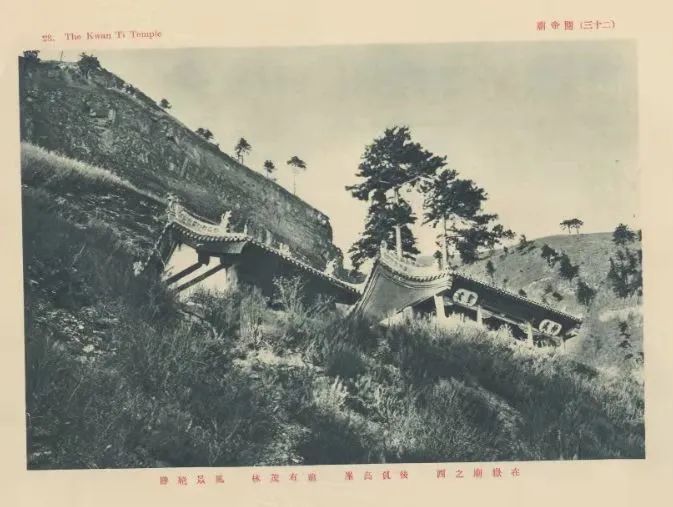
Located west of the Yue Temple, it is backed by a high peak and fronted by a lush forest, making it a place of exceptional beauty.
(24) Side and Front Views of the Yue Emperor's Seal
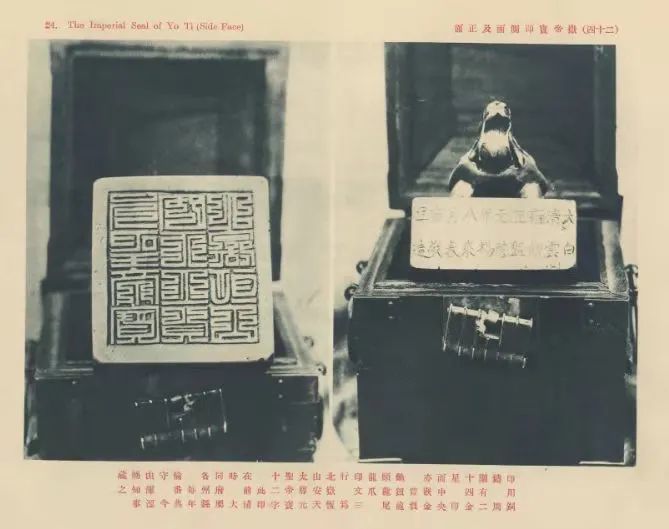
The seal is made of bronze, surrounded by twenty-four gold stars. The center of the seal face is also inlaid with gold, with a tortoise button, dragon head, tail, and claws on the back. The inscription is in three lines: "Hengshan Mountain An Tian Zun Yuan Sheng Di Bao" (twelve characters). During the Qing Dynasty, this seal was guarded in turn each year by the various prefectures and counties under Datong Prefecture. It is now kept by the magistrate of Hunyuan County.
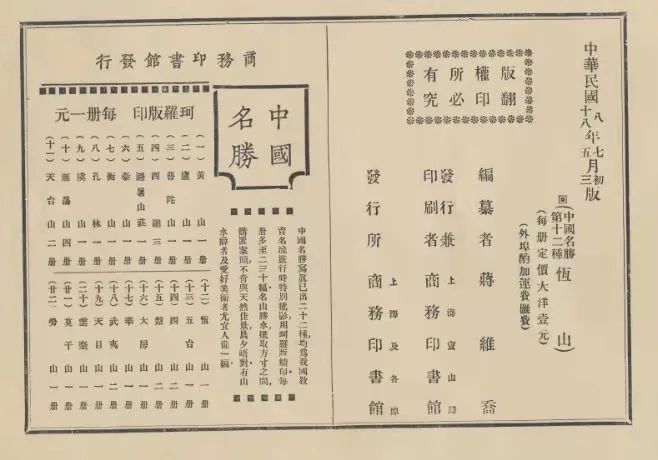
First edition: July, 1919; Third edition: May, 1929.
China's Famous Sights, No. 12—Hengshan Mountain. Price: One yuan per copy. Additional shipping and remittance fees apply outside of the city.
Compiled by: Jiang Weiqiao
Published and Printed by: The Commercial Press, Baoshan Road, Shanghai
Distributor: The Commercial Press, Shanghai and other locations
Twenty-two volumes of China's Famous Sights Photographs have been published. All were specially photographed by famous figures in Chinese education during their travels, printed using chromolithography, each volume containing 20 to 30 pictures of famous mountains and waters. Acquiring a copy for your desk is like facing the natural beauty of mountains and waters morning and evening. Those with a love of mountains and water, and those who love art, should especially have a copy.
China's Famous Sights (Published Picture Books): 1. Huangshan, 2. Lushan, 3. Putuo Mountain, 4. West Lake, 5. Summer Resort, 6. Taishan, 7. Hengshan, 8. Konglin, 9. Yushan, 10. Yandang Mountain, 11. Tiantai Mountain, 12. Hengshan Mountain, 13. Wutai Mountain, 14. Xishan, 15. Panshan, 16. Dafang Mountain, 17. Huashan, 18. Wuyi Mountain, 19. Tianmu Mountain, 20. Yun Tai Mountain, 21. Mogan Mountain, 22. Laoshan.
Text Organization: Jing Zhiyong
Image Scanning: Tong Yongjiang
Proofreading: Xue Fang
Editor: Xing Xuelin
Keywords:
Hengshan
Related News


